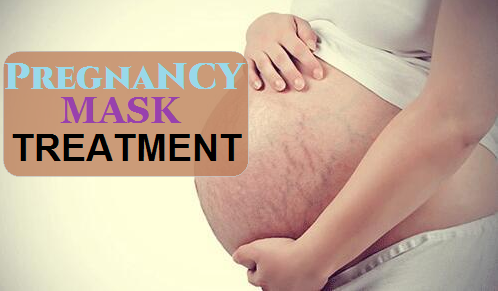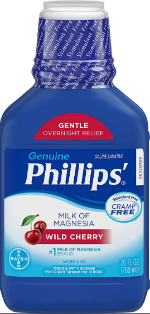Chloasma happens to be one of the most horrible side effects on your skin when you are pregnant. But if you are struggling with pregnancy masks or Chloasma, believe me, you are not alone.
50-70% of pregnant women out there are all victims of this situation but luckily enough, there are some very simple ways to deal with this issue without the application of nasty chemical products or lasers.
In this article, we will discuss the details of pregnancy mask treatments. We shall also discuss what to do to prevent pregnancy masks in general.
What is Pregnancy Mask?
Let us first take a look at what a pregnancy mask is. Pregnancy masks, also known as Melisma or Chloasma, are a condition in which your body produces an excess amount of hormones during pregnancy, many of which, particularly estrogen, can lead to hyperpigmentation.
Causes of Pregnancy Masks
Due to melanocyte-stimulating hormones, this hyperpigmentation results in dark, blotchy areas on your face, particularly on the cheeks, forehead, and mouth area. MSH (Melanocytes stimulating Hormones) is a collection of hormones produced by the pituitary, hypothalamus, that is sunlight.
Image Source: Unsplash
The skin may then begin to produce melanin, a protective pigment. The skin cells are shielded by this pigment from DNA damage, such as cancer. Increases in MSH lead to pigmentation, however, sun exposure is only one element of a much bigger picture.
Hormonal Imbalance
Unbalanced hormones have a significant role in this issue. You are more likely to experience the effects of hormonal imbalance while pregnant if your hormones had been out of balance prior to conception, regardless of whether you noticed any symptoms.
Making sure that your hormones are balanced and your health is at its best before becoming pregnant will be a great idea for everyone, regardless of whether you’ve ever experienced chloasma.
Hormonal Imbalance Correction
Although it would be great to get your hormones under balance before conceiving, correcting hormonal imbalances can improve your general vitality and boost your chances of getting pregnant quickly.
Just as with pregnancy puffs and acne, rebalancing them when pregnant could still relieve your chloasma. The best place to begin is inside. In order to nurture your baby and generate the hormone, your body requires the right building blocks.
As a result, it requires a lot of high-quality nutrients from sources like pastured, grass-fed, and organic eggs, as well as fresh, organic produce and nuts, seeds, and avocados. Saturated and monounsaturated fats are essential for our body’s normal functioning, particularly in the production of hormones.
Avoid Refined Sugar
In lemon natural sugars, completely avoid using refined sugar. An excessive portion of Americans suffers from an omega-3 to 6 fatty acid imbalance. This is due to the high concentration of omega-6 fatty acids found in polyunsaturated vegetable oils such as canola.
It is nearly impossible to avoid these oils. Avoid the excessive amount of polyunsaturated fats in restaurant cuisine and packaged foods.
Eat as many home-cooked meals as you can and utilize healthy fats such as pastured butter, virgin coconut oil, and olive oil. Eat healthy meals and/or fish about 2 or 3 times a week, or if you’re unable to or unable to eat fish, take a raw cod liver oil supplement.
Avoid Toxin
Toxins can imitate hormone levels and prevent your body from manufacturing hormones on its own. They can be found in daily objects including cleaning supplies, cosmetics, furnishings, pesticides, and cleaning products.
Even seemingly insignificant adjustments might have a significant impact. If the brands are natural and free of endocrine disruptors, use them instead of typical household cleaners. Use your regular body wash and shampoo instead of plastic wherever possible, and attempt to buy some glass storage containers.
Get Quality Sleep
This is a right that many people could find challenging, especially if it’s your first pregnancy. But it’s essential for properly balancing hormones. Your hormones have the time to reset and maintain your body when you get enough sleep.
Exercise Should Be Moderate
Exercise is beneficial during pregnancy, but not in excess, as this will only increase your body’s stress levels and worsen any existing imbalances.
Therefore, it is advised that you select light exercise.
For example:
- Walking
- Swimming and
- Yoga
Be Careful of Your Copper Level
Copper appears to be tightly linked to additional gene metabolism in the overall nut shed. This implies that east Trojan exists where unregulated copper does not, and vice versa. This makes too much copper another factor in pregnancy masking. Too much estrogen is typically the result of too much-unbound copper.
The various symptoms of copper toxicity are:
- Short attention span
- Fatigue
- Brain fog
- Headaches
- Depression
- Emotional sensitivity
- Anxiety
- Yeast,
- PMS, and
- Bacterial infections
Learn More!

Symptoms of Melasma During Pregnancy
When does a pregnancy mask appear? Melasma typically manifests on the face during pregnancy as tan, brown, or occasionally blue-gray patches of the skin areas that are uneven or speckled.
It frequently manifests in these regions:
- Both sides of the cheeks
- Chin
- Forehead
- The brow of the nose
- On the upper lip
- Jawline
Though less frequent, melasma might also appear on the arms or neck. Melasma does not have any physical signs, including itching or soreness. People may become self-conscious regarding their appearance as a result, though.
Pregnancy Mask on Face But Not Pregnant
Because it can occasionally be brought on by an excess in hormones among pregnant women, melasma is frequently referred to as “the mask of pregnancy. But while this ailment is frequently seen in expectant mothers, melasma can affect anyone.
It can affect any woman across many stages of life and is not just related to pregnancy. And it might continue for a long time. Therefore your skin needs special care during pregnancy. According to Dr. Barbara Gilchrest, senior lecturer in dermatology at Harvard Medical School, “Women who develop pregnancy mask in their teens, 20s, or 30s may have it remain around for decades.”
Pregnancy Mask Treatment at Home
Lemon Juice
The top layer of our skin that is darkly pigmented can be effectively removed using lemon juice.
How to Use It:
-
- Cut a lemon in half, then squeeze the juice
- Combine the juice and half of the hydrogen peroxide
- Fill it in a spray bottle
- Spray several times every day on the afflicted region
Additionally, you can use cucumber juice in place of hydrogen peroxide.
ACV (Apple Cider Vinegar)
Our longtime and dear friend is apple cider vinegar. In addition to lightening dark spots, it can also make your skin seem better overall.
How to Use It:
The toner with apple cider vinegar:
-
- Simply combine 50/50 ACV and water
- Apply enough quantity to the dark areas to make them lighter
Turmeric Milk
Additionally, turmeric will shield your skin from UV harm.
How to Use It:
-
- Simply combine turmeric powder
- Add raw milk and blend to create a fine paste
The black spots can then be treated with the paste, which you should keep on for around 10 minutes before washing off. You may also consume turmeric milk, which may benefit your skin from inside to outside.
Horseradish Milk
Dark patches on the skin can be removed with Horseradish milk.
How to Use It:
-
- Measure out some horseradish root
- A half-cup of water
- Place in a blender
- Combine, then pour into a glass
- Increase the horseradish juice by 2 teaspoons
- Include 2 teaspoons of raw milk
- Stir thoroughly until thoroughly smooth
Splash the face when ready, ten minutes or so before showering or cleansing.
Milk of Magnesia
Before bed, wash your face then rub liberally with a cotton ball. Leave it on while you sleep, then wash it away in the morning.
Sun Protection
You should restrict the time you spend in the sun because it raises your risk of developing pregnancy masks. Simply avoid going outside during the warmest part of the day, and whenever you must go outside, remember to use a hat and high-quality, non-toxic sunscreen.
How to Treat Pregnancy Mask After Having Your Baby
As hormone levels normalize, the pregnancy mask may occasionally go on its own. Other times, you might need to utilize unique products to speed up the fading process.
Here are a few instances:
- Creams sold over the counter that has 2% hydroquinone in them
- Creams on prescription with 4% hydroquinone
- Sunscreen
- Blasting substances
- Corticosteroids
Also, keep in mind that you should wait to use these prescriptions until you have done breastfeeding. You should discuss your treatment choices with your Doctor.
You May Also Love These!
How to Prevent Pregnancy Masks from Developing?
Use the following advice to stop melasma from appearing or returning, especially if your skin tone is darker:
- Wear sunscreen – Melasma is brought on by exposure to the sun, hence it is always advised to wear sunscreen with an SPF of at least 30. UV-A and UV-B ray protection is required from your sunscreen.
- Wear sunglasses and wide-brimmed hats – According to some studies, some women still develop melasma while wearing sunscreen. Longer UV wavelengths are speculated to be the problem. Therefore, protective gear and sunglasses are necessary if you are prone to developing melasma.
- Use calming skincare and cosmetics – Melasma can get worse if you use treatments that burn or sting when administered.
- Do not wax – Waxing can aggravate melasma by inflaming the skin in places above the top lip.
- Hormone adjustments – Patients who take hormone-containing birth control pills can change their medication or method of contraception.
Patients should pay special attention to the lotions and cosmetic products they use during pregnancy in addition to using sunscreen and wearing protective clothing when outdoors. For instance, natural extract-based shower gels are preferable to harsher formulations. Additionally, it’s crucial to stay away from soaps and gels with intense fragrances.
Frequently Asked Questions
Does the pregnancy mask go away after birth?
The good news is that the pregnancy mask normally goes away after birth or when you stop nursing. Ask your doctor about your alternatives if your melasma continues even after you’ve weaned. Many treatments can lessen melasma but aren’t safe to use if you’re pregnant or nursing may be approved, such as chemical peels, lasers, strong pulsed light therapy, and topical medicines.
How does melasma look?
Blotches or freckles that appear darker than other parts of your skin tone might be a melasma symptom; these are typically found on the face. They are typically tan or brownish, although, on those with darker skin tones, they might seem blue-gray. Melasma develops gradually, and the spots are typically larger than those brought on by aging or sun damage.
What are the different types of melasma?
Depending on how far into the skin the darker pigment penetrates, there are three different forms of melasma:
-
- Epidermal – Patches of dark brown with a distinct boundary
- Dermal – Patches that are pale brown or bluish with a fuzzy border
- Mixed melasma – Areas of brown and bluish-grey combined
Will melasma harm my baby?
Your baby won’t be harmed by melasma. It has no impact on your pregnancy, neither is it malignant nor does it develop into cancer.
Conclusion
Every pregnancy is often accompanied by a wide range of emotional and physical changes. It can be aggravating to add melasma to the mix, especially if it makes you self-conscious regarding your appearance.
Making use of the above-mentioned pregnancy mask treatment will help, but keep in mind that it will probably disappear after giving birth. Be careful of your skin in the interim, and if the spots are truly hurting you, talk to your doctor about any potential pregnancy-safe therapies.








